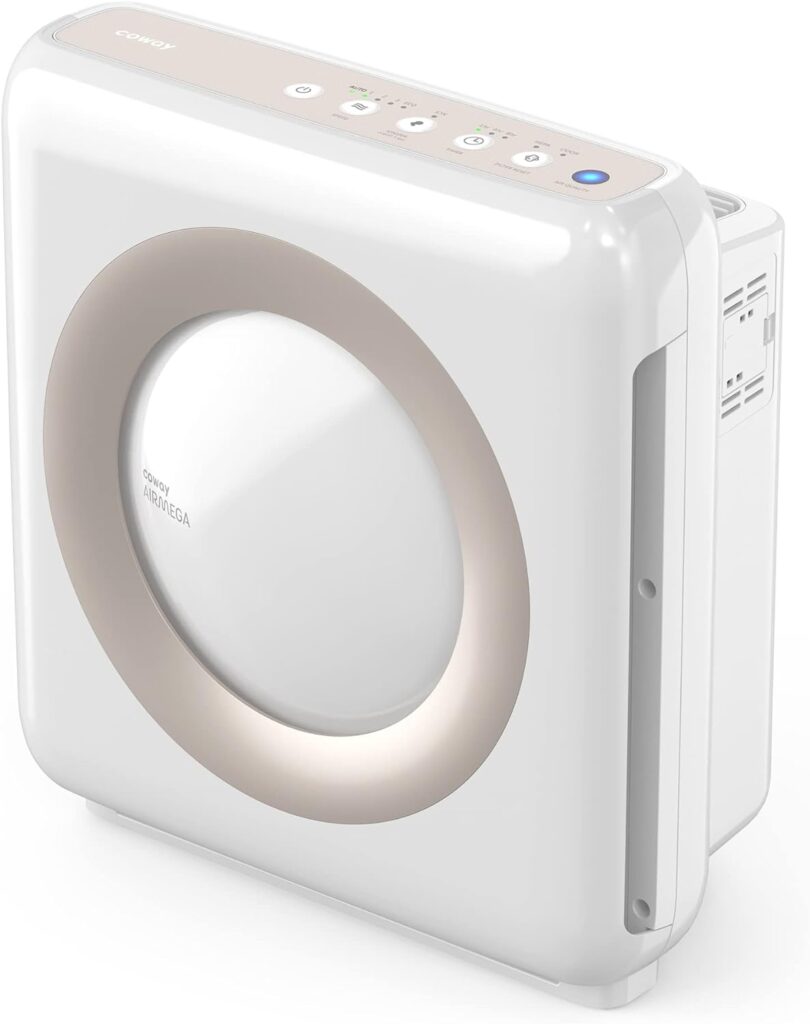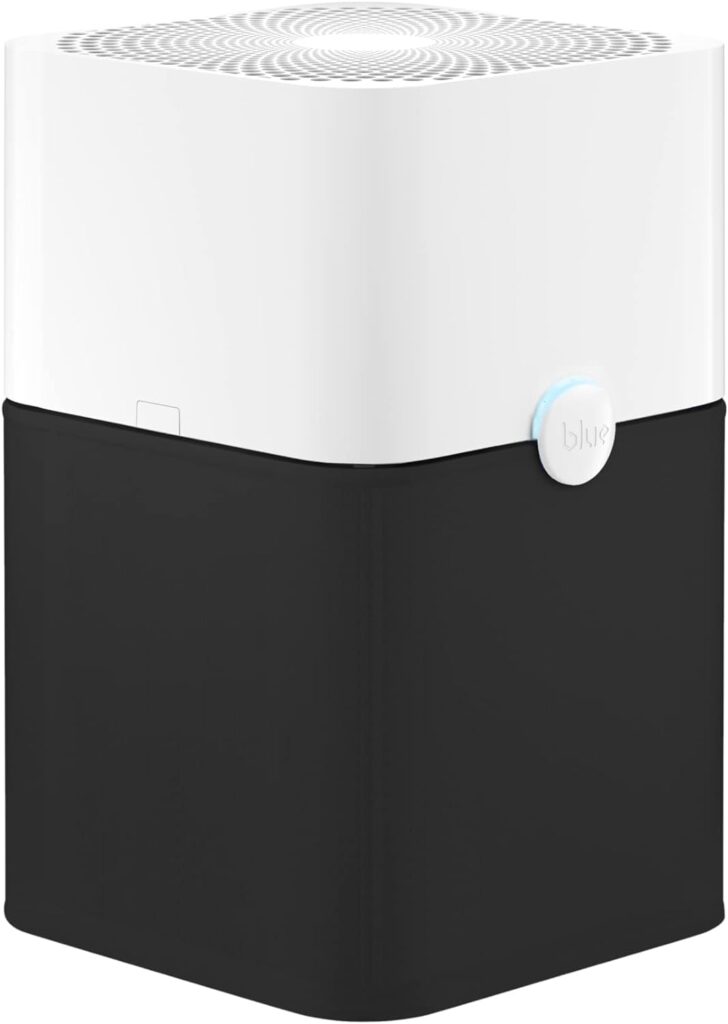Hey there! If you’ve found yourself here, you’re probably considering an air purifier for your home or office. Maybe you’re curious about how they work or wonder which is best for your needs. Whatever the case, you’ve come to the right place. In this extensive guide, I’ll cover everything from the basics of air purifiers to detailed recommendations. So, let’s dive in!

What is an Air Purifier and Why Do You Need One?
Air purifiers are devices designed to remove contaminants from the air in a room. They are commonly marketed as being beneficial to allergy sufferers and asthmatics, and reducing or eliminating second-hand tobacco smoke. But honestly, anyone can benefit from cleaner air.
The Benefits of Using an Air Purifier
From personal experience, I can tell you that having an air purifier at home has made a noticeable difference in air quality and overall well-being. Here are some of the key benefits:
- Allergy Relief: If you suffer from allergies, an air purifier can help reduce the presence of allergens like dust mites, pollen, and pet dander.
- Asthma Symptoms Alleviation: Cleaner air means fewer triggers for asthma sufferers.
- Odor Removal: Whether it’s cooking smells or pet odors, air purifiers can help keep your home smelling fresh.
- Reduction of Harmful Chemicals: Air purifiers can remove harmful chemicals like VOCs (volatile organic compounds) that are often found in household products.
- Improved Sleep: Cleaner air can lead to better sleep quality. You might not notice it immediately, but over time, the difference is significant.
How Do Air Purifiers Work?
Before getting into the types and features of air purifiers, it’s essential to understand how they work. Most air purifiers use a combination of filters and fans to remove particles from the air. Here’s a breakdown of the common components:
HEPA Filters
HEPA (High-Efficiency Particulate Air) filters are a staple in air purifiers. They can capture particles as small as 0.3 microns with 99.97% efficiency. This includes dust, pollen, mold spores, and even some bacteria.
Activated Carbon Filters
These filters are excellent for removing odors and gases. They work by adsorbing pollutants onto a carbon surface. If you have pets or cook frequently, you’ll appreciate an air purifier with an activated carbon filter.
UV Light
Some air purifiers use UV (ultraviolet) light to kill bacteria and viruses. It’s an added layer of protection, but it shouldn’t be the only feature you rely on for cleaner air.
Ionizers
Ionizers release negative ions into the air, which attach to positively charged particles like dust and allergens. This causes the particles to fall out of the air or stick to surfaces, which can then be cleaned.
Different Types of Air Purifiers
There are various types of air purifiers, each with its own set of features and benefits. Let’s go over the most common types:
HEPA Air Purifiers
HEPA air purifiers are the most popular and widely recommended. They are highly effective at removing particulate matter from the air. I have a HEPA purifier in my living room, and it’s a game-changer for keeping dust and pollen at bay.
Activated Carbon Air Purifiers
These are particularly useful for removing odors and chemical fumes. If you live in an area with a lot of traffic pollution or have strong household odors, this type is worth considering.
UV Air Purifiers
UV air purifiers are great for killing bacteria and viruses. They are often used in medical settings but are also available for home use. I find them particularly useful during flu season.
Ionic Air Purifiers
These purifiers release ions to remove particles from the air. They can be effective but sometimes produce ozone, which can be a concern for people with respiratory issues. If you choose this type, make sure it meets safety standards.
Ozone Generators
Ozone generators are effective at removing odors but are controversial because ozone can be harmful to health. I generally advise against using these in homes.
Choosing the Right Air Purifier for Your Needs
Selecting the right air purifier can be overwhelming with so many options available. Here are some factors to consider:
Room Size
The size of the room where you plan to use the air purifier is crucial. Each purifier has a recommended room size, so make sure to choose one that matches your needs. For example, my bedroom is about 150 square feet, so I went with a purifier designed for that size.
Specific Needs
Consider what you need the purifier for. Is it for allergies, asthma, pet dander, or smoke? Some purifiers are better suited for specific issues. If you have pets, look for one with a good HEPA filter and an activated carbon filter.
Noise Level
Some air purifiers can be quite noisy, which can be a problem if you’re a light sleeper. Look for one with a low noise level, especially if you plan to use it in your bedroom.
Maintenance
Check how often you’ll need to replace the filters and how much they cost. Some purifiers have washable filters, which can save money in the long run. I prefer ones with washable pre-filters as they help extend the life of the HEPA filter.
Energy Consumption
Energy-efficient models can save you money on your electricity bill. Look for purifiers with the Energy Star label.
Top Air Purifiers on the Market
There are many excellent air purifiers available, but here are a few that stand out based on performance and customer reviews:
1. Dyson Pure Cool TP04

This air purifier doubles as a fan and has HEPA and activated carbon filters. It’s excellent for large rooms and has a sleek design. I love that it can also be controlled via a smartphone app.
2. Honeywell HPA300

A great choice for large rooms, the Honeywell HPA300 has a powerful HEPA filter and can cover up to 465 square feet. It’s a bit noisy on the highest setting, but the performance makes up for it.
3. Levoit LV-H132

Perfect for small rooms and budget-friendly, the Levoit LV-H132 has a HEPA filter and a compact design. It’s ideal for bedrooms and offices. I use this one in my home office, and it’s quiet enough not to be distracting.
4. Coway AP-1512HH Mighty

This model is highly rated for its performance and energy efficiency. It has a HEPA filter, activated carbon filter, and ionizer. It’s also reasonably priced for the features it offers.
5. Blueair Blue Pure 211+

Great for medium to large rooms, the Blueair Blue Pure 211+ has a washable pre-filter and is very effective at removing pollutants. I appreciate its minimalist design and straightforward operation.
Maintaining Your Air Purifier
To keep your air purifier running efficiently, regular maintenance is crucial. Here are some tips:
Replace Filters as Needed
Check the manufacturer’s recommendations for filter replacement. Some filters need to be replaced every 6 months, while others can last up to a year. I set a reminder on my phone to check the filters every three months.
Clean the Unit
Dust and debris can accumulate on the outside of the purifier. Wipe it down regularly with a damp cloth. If the pre-filters are washable, make sure to clean them according to the instructions.
Monitor Air Quality
Some air purifiers come with air quality sensors. Use these to monitor the air quality and adjust the purifier settings as needed. I have a sensor in my living room that connects to my purifier, and it’s fascinating to see how the air quality changes throughout the day.
Use in the Right Environment
Place the purifier in an area where it can circulate air effectively. Avoid placing it in corners or behind furniture. For the best results, I keep mine in an open area with good airflow.
Common Myths About Air Purifiers
There’s a lot of misinformation about air purifiers out there. Let’s debunk some common myths:
Myth 1: Air Purifiers Remove All Pollutants
While air purifiers are highly effective, they can’t remove all pollutants. They are best used in conjunction with other measures, like regular cleaning and proper ventilation.
Myth 2: Bigger is Always Better
A larger purifier isn’t necessarily more effective. It’s important to choose one that matches the size of your room. A purifier that’s too large can be inefficient and noisy.
Myth 3: Air Purifiers Cure Allergies and Asthma
Air purifiers can help reduce symptoms, but they are not a cure. They should be part of a comprehensive plan to manage allergies and asthma, including medication and avoiding triggers.
Myth 4: All Air Purifiers Are the Same
There are significant differences in performance and features among air purifiers. It’s essential to research and choose one that meets your specific needs.
Personal Experiences and Testimonials
I’ve talked to a few friends and family members about their experiences with air purifiers, and here’s what they had to say:
Sarah’s Story
Sarah has two cats and suffers from pet allergies. She invested in a HEPA air purifier and noticed a substantial improvement in her symptoms. “It’s amazing how much better I feel. I can breathe easier, and my eyes aren’t as itchy,” she said.
Mike’s Experience
Mike lives in a busy urban area with high pollution levels. He bought an air purifier with an activated carbon filter to combat the traffic fumes. “I didn’t realize how much the pollution was affecting me until I got the cleaner. The air feels so much cleaner now,” he shared.
Lisa’s Testimonial
Lisa has asthma and found that using a UV air purifier during flu season helped reduce her asthma attacks. “It’s been a lifesaver, especially with the kids bringing home all sorts of germs from school,” she explained.
Conclusion: Investing in Your Health
In conclusion, an air purifier can be a valuable addition to your home, providing numerous health benefits and improving overall air quality. Whether you’re dealing with allergies or asthma, or just want cleaner air, there’s an air purifier out there that can meet your needs.
Remember, the key is to choose the right type, maintain it properly, and use it in conjunction with other healthy practices. I’ve found that having an air purifier has made a significant difference in my quality of life, and I hope this guide helps you find the same relief and comfort.
Feel free to leave a comment or reach out if you have any questions. Here’s to breathing easy and living healthier!
Related Articles

SAMMY MWANGI the editor of Autohomegadgets.com. He is an Electronics Technician enthusiast and a Sales Manager in one of the leading ICT companies in Africa. When he is not working, he loves to travel and explore nature. He is a Robot fanatic too.

